Text
Obsessed with the fact that Kylie would rather have to deal with an axe wielding executioner ghost than our gang. They're that annoying.
#'at least theres only one of them'#ghosts bbc#bbc ghosts#comedy relief special#bbc ghosts comedy relief
198 notes
·
View notes
Text

#yes i’m counting the captain as a comic relief character#it’s a comedy they’re all comic reliefs#blorbos#klaus hargreeves#umbrella academy#the umbrella academy#klaus tua#richie tozier#richie it#it 2019#it 2017#the captain#captain bbc ghosts#bbc ghosts#ghosts#ghosts bbc#captain ghosts#robert sheehan#bill hader#ben willbond#skrunglies#meese originals
777 notes
·
View notes
Text







📸 Guido Mandozzi
2 notes
·
View notes
Text
Performances of Stuff Tim Wrote Himself (+ with others)
THE POET SHOWS
Chrimbo Bimbo 2020: https://www.youtube.com/watch?v=VSXmndZXVis
Edinburgh Comedy Live 2011: https://www.youtube.com/watch?v=I3Z-ZFCRohQ&t=1280s [with The Horne Section]
Knock2Bag 2010: https://www.youtube.com/watch?v=JC8bwIiOLr4
Edinburgh and Beyond c2007: https://www.youtube.com/watch?v=EKE7XmfsBIg&list=PLYuILPWZo7KObT6pNgoaj7394ziaaAxCK&index=5
Comedy Shuffle 2007: https://www.youtube.com/watch?v=K8J-qzYOYCc
Up the Creek 2006: https://www.youtube.com/watch?v=bgHNLtY1k6g [intro’d by Mark Watson!]
POETRY PERFORMANCES NOT IN SHOWS
Monday (for The Samaritans): https://www.youtube.com/watch?v=G7OU8aC8hUQ&list=PLYuILPWZo7KObT6pNgoaj7394ziaaAxCK&index=2
Ghosts (for the Pleasance): https://www.youtube.com/watch?v=bbdCgeoPU2g
Siblings (for The Guardian): https://www.theguardian.com/stage/video/2014/aug/12/tim-key-poem-edinburgh-festival-single-white-slut
Latitude: https://www.youtube.com/watch?v=tkSknpdhkMI
Royal Wedding (for The Guardian): https://www.youtube.com/watch?v=q8iBZ5nQgxw
Tim Key. With a Strong Quartet. On a Boat (2010):
Waterloo: https://www.youtube.com/watch?v=MrarrHCyurw
Promo vid: https://vimeo.com/16308708
BBC Promo: https://www.bbc.co.uk/news/av/entertainment-arts-11742401 (video doesn’t work)
Poems / short films on Tim’s director’s YouTube channel: https://www.youtube.com/channel/UCM4YzVnrjoW4IauCEt5N1Lg/videos
Poems / short films on Tim’s YouTube channel: https://www.youtube.com/user/timkey25/videos
POETRY NOT QUITE PERFORMANCES
Reading poems to advertise the book:
Rules of War: https://www.youtube.com/watch?v=gKr6N9G8II0
Joint Account: https://www.youtube.com/watch?v=6_3wbYy3LDw
Fraud: https://www.youtube.com/watch?v=qKycWCqQbuk
Paragliding: https://www.youtube.com/watch?v=pX2X79UtDCU
Audiobook recording 2011: https://www.youtube.com/watch?v=DOpX1BSwjJ0
With Alex Horne in 2005: https://www.youtube.com/watch?v=aL_vheiBY0E
POETRY ON CHARLIE BROOKER SHOWS
Deal or No Deal: https://www.youtube.com/watch?v=dLjTwh6s53c
Taliban: https://www.youtube.com/watch?v=LUw_Qg09K2Av
Banker: https://www.youtube.com/watch?v=I7EJnQ_5ex8
Politics: https://www.youtube.com/watch?v=6WEcv-NBA4Y
Bwand and Woss: https://www.youtube.com/watch?v=EUPnmBZsoro
TV ads: https://www.youtube.com/watch?v=ZltkBOA13C0
Asteroids: https://www.youtube.com/watch?v=DASt63SDrMg
(maybe there are more)
FILMS
Wonderdate (2018): https://www.youtube.com/watch?v=14jDV2rBnU0&t=1s
Comic Relief (2017): [link?]
The One and Only Herb McGwyer Plays Wallis Island (2007): https://vimeo.com/182136995
The Amazing Hedge Puzzle (2007): https://www.youtube.com/watch?v=U4n3vpp9yaY
Woodland Rain (date?): https://vimeo.com/19832218
TV
Cowards: https://www.youtube.com/watch?v=1VwxfgVap3s
Freeze (pilot?): https://vimeo.com/254707985#_=_
RADIO
Lasties with John Kearns (2021): https://www.bbc.co.uk/programmes/m0010p29
Tim Key’s Late Night Poetry Programme and Christmas Poetry Programme (2012-2020 [so far...]): https://www.bbc.co.uk/programmes/b03pn5pl
Tim Key Dives into Daniil Kharms and That’s All (2016): https://www.bbc.co.uk/programmes/b072n5xc
Sunday Afternoon at Home with Tim Key (2014): https://www.bbc.co.uk/programmes/b03sb8b0 [link needed] ; Clip: https://www.bbc.co.uk/programmes/p01q84ln
Tim Key’s Easy USSR (2013): https://www.bbc.co.uk/programmes/b03h30gb [alt link: https://www.youtube.com/watch?v=-uE_kv9Y408]
Tim Key and Gogol’s Overcoat (2012): https://www.bbc.co.uk/programmes/b01nt3y0
Tim Key’s Suspended Sentence (2011): https://www.bbc.co.uk/programmes/b0128pyh
From Fact to Fiction (2009): https://www.youtube.com/watch?v=qcVvgWkZ6TE
Cowards (2007-2008): https://www.bbc.co.uk/programmes/b00fbl37
All Bar Luke (2006-2009): https://archive.org/details/allbarluke
OTHER STUFF
Alex Horne’s YouTube channel: https://www.youtube.com/channel/UCRmnYfTzS-OAJ4wjcOUOR8g
In Knock2Bag Presents...The Moth House: https://www.youtube.com/watch?v=gW6zxT3Qbxg
In The Lockdown Lock-In: https://www.youtube.com/watch?v=6veEshKErs4
35 notes
·
View notes
Photo
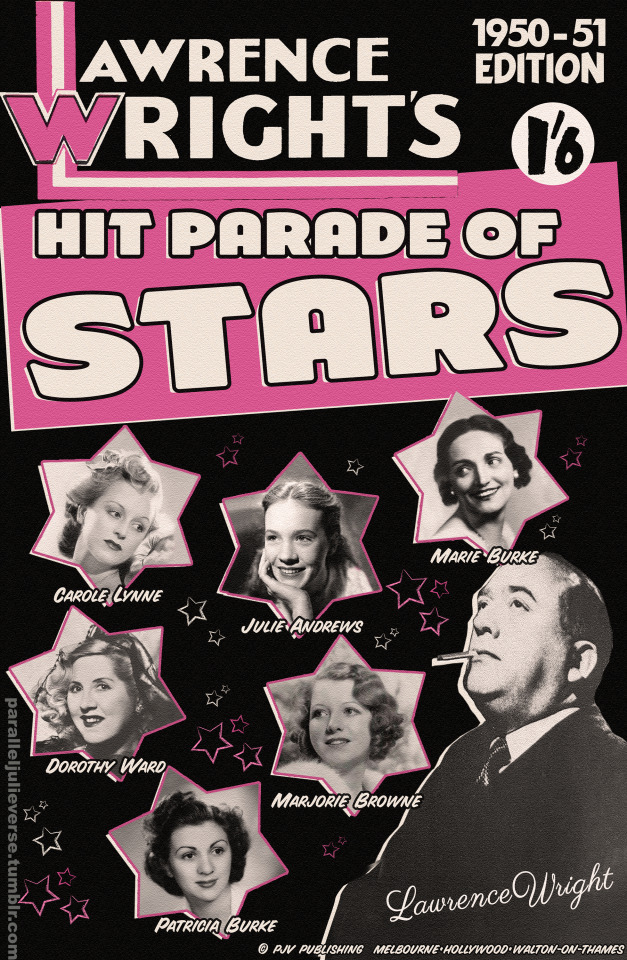
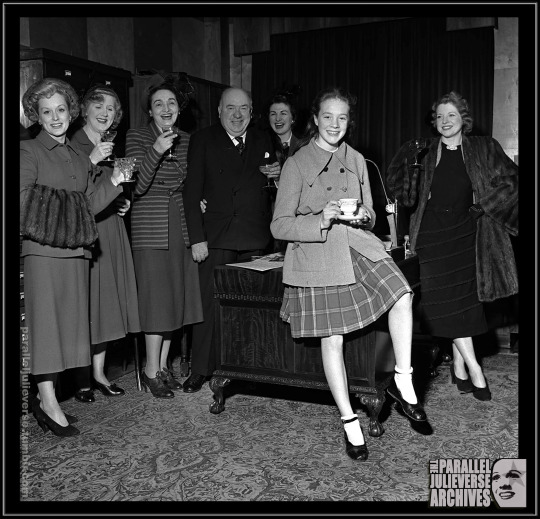
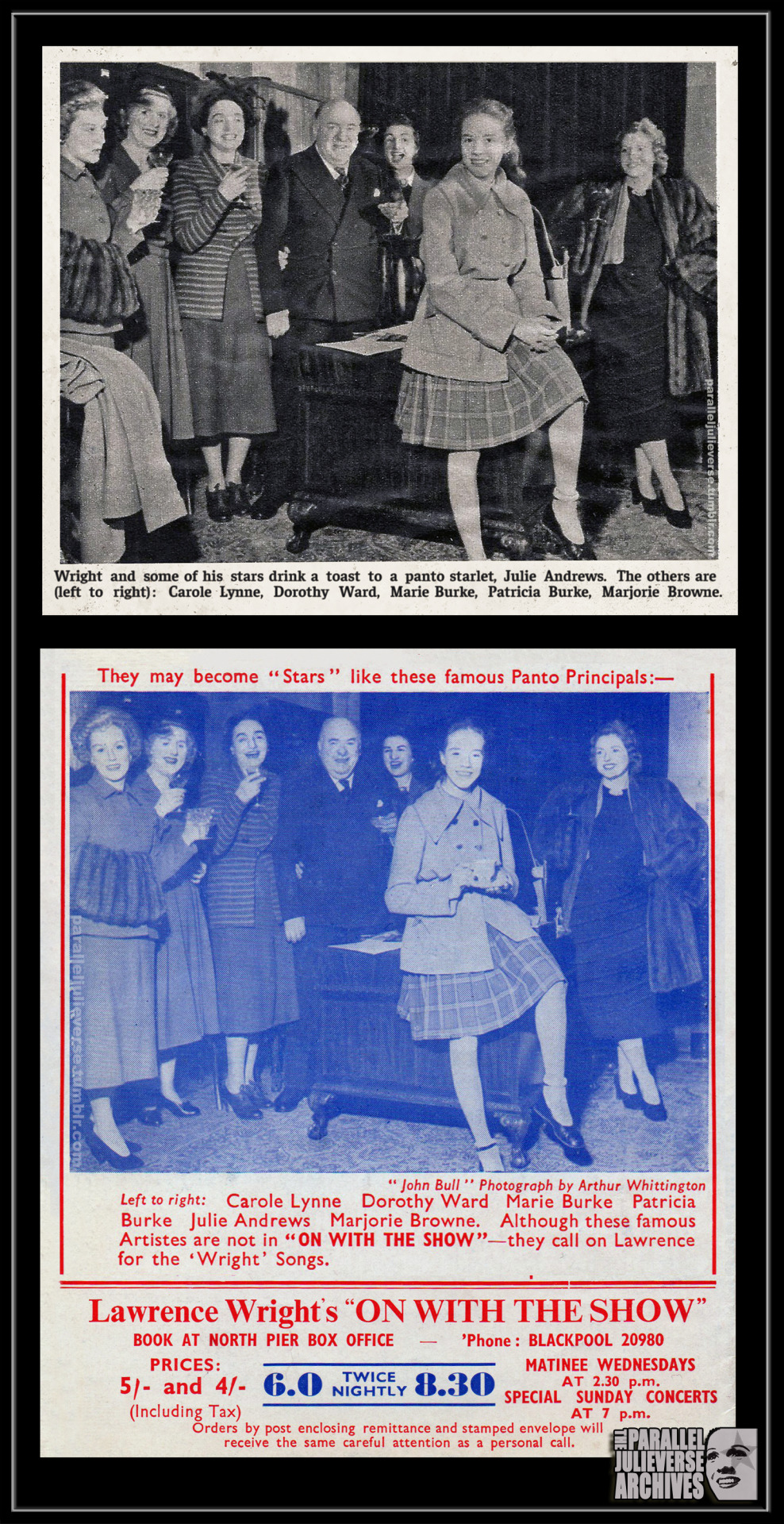
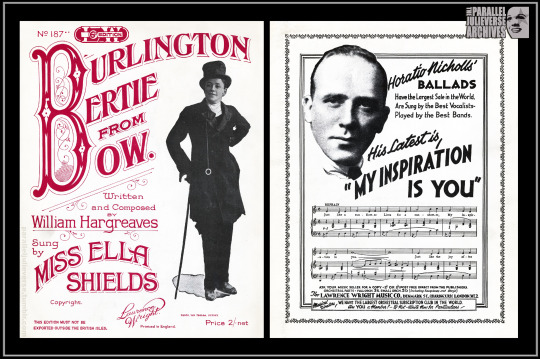
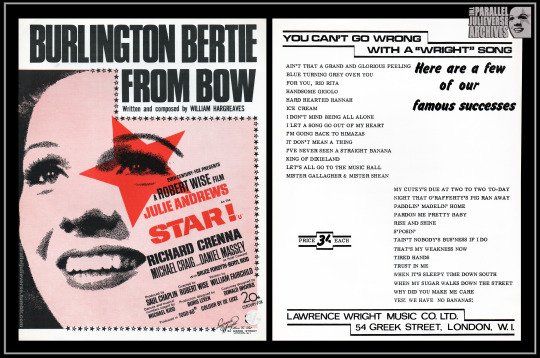
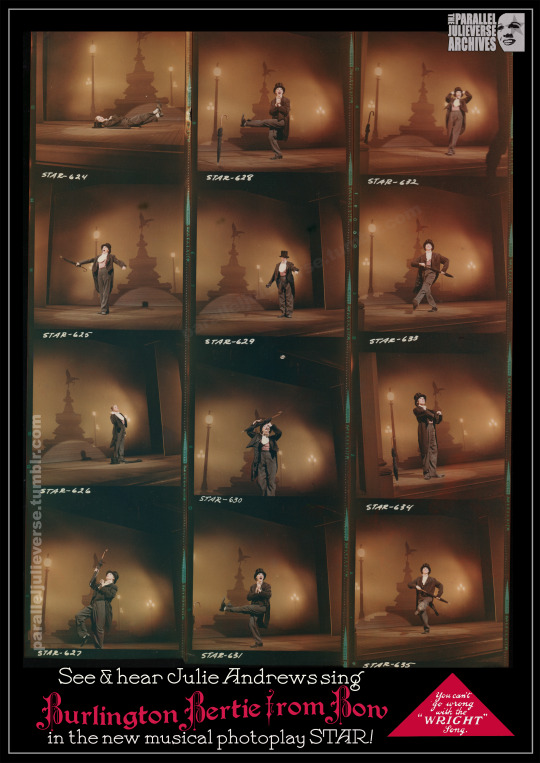
It’s been a while between posts here at the Parallel Julieverse, but we have finally managed to clear a bit of time from work, life, and other such annoyances to get back to what really matters: all things Julie! And in this post we highlight an interesting tidbit of trivia from late-1950 when Julie was appearing in Red Riding Hood at the Theatre Royal Nottingham, the subject of a recent 70th anniversary tribute post.
Although she had only just turned 15 when she was cast as the eponymous lead in Red Riding Hood, Julie Andrews was already an established juvenile star of considerable note. Her debut star-making turn as a 12-year-old child prodigy in Starlight Roof in 1947/48 garnered widespread media attention and it catapulted the young singer into a whirlwind period of touring performances, radio programmes, West End pantomimes, and even early television appearances. Julie’s subsequent casting as the resident singer in the hit BBC radio series, Educating Archie, augmented her fame further, bringing her voice into the sitting rooms of Britain on a weekly basis and making her a household name.
With this growing renown came equally expanded opportunities for cross-promotional marketing such as celebrity endorsements and advertising. A particular variant of celebrity promotion popular in the era was the staged 'star visit’ or what today might be termed ‘celebrity event marketing’ (Segrave 2005). Here the star would be invited to appear at a particular event or special occasion as a way of boosting public and media interest, while serving in return as a form of value-adding PR for the star and his/her professional ventures.
Julie was involved in several such ‘star visits’ during the three month run of Red Riding Hood. During rehearsals in mid-December 1950, she was invited as a VIP guest and honorary judge at the Annual Dance for Booth and Son, a major British apparel manufacturing company (‘Ilkeston’, 1). Around the same time, she paid a special visit to the Nazareth House for Children in Nottingham (‘Night’, 2), as well as the Borough Green Air Training Corps Cadets Open Night where “[p]art of the evening’s entertainment had to be cancelled in order to allow the enthusiastic younger generation to get her autograph” (‘Julie stopped’, 3).
One of the more fascinating such events -- and the one that we profile here -- was a courtesy visit to famed music impresario, Lawrence Wright. Today, Wright is little remembered, save by a handful of theatre history enthusiasts, but he was a major figure in the British entertainment industry of the early twentieth century (Wright 1988). Popularly dubbed the ‘Daddy of Tin Pan Alley’ and the ‘Monarch of Melody’, Wright started as a music composer in his hometown of Leicester where, under the pseudonym of Horatio Nicholls, he penned a string of popular songs such as “Down by the Stream", “Blue Eyes”, “Toy Drum Major”, and “Among My Souvenirs” (‘Alley’s Daddy’, 3).
Wright’s greatest success, however, came as a sheet music publisher and entertainment entrepreneur. In 1910, he chanced upon a catchy tune written by a local Leicester street singer called “Don’t Go Down the Mine, Daddy”. He promptly purchased the rights to the song and published it as part of his embryonic music company. A week after the song went on sale, there was a tragic mining disaster in Whitehaven in which 147 men and boys lost their lives. Recognising a potential marketing angle, Wright had a snipe printed across the top of the sheet music declaring that “Half the profits from the first ten thousand sold will go to the relief fund for the Whitehaven pit disaster” (Wright, 4). The song became a national sensation, selling over a million copies, and making Wright a small fortune. With the proceeds, he moved to London and set up shop as the ‘Lawrence Wright Music Company’ in Denmark Street, establishing what would become the city’s ‘Tin Pan Alley’.
Under the slogan, ‘You Can’t Go Wrong with the Wright Song’, Wright became the single biggest music publisher in the UK with an eventual catalogue of over 5000 songs which he leased to major theatre producers and singing artists of the day. In an era when many homes had a piano and singalongs in the parlour were a popular social pastime, Wright also sold his sheet music direct to the public through a nationwide chain of ‘Lawrence Wright Music Shops’. Ever the canny entrepreneur, Wright diversified his business holdings with a host of affiliate ventures. In 1926, he founded The Melody Maker, the first British periodical devoted to popular music, which remained in continuous publication right into the early-2000s. He launched a popular series of self-paced musical tutorials which taught a generation of young Britons how to play everything from the piano to the banjo. Wright also moved into theatre producing, mounting an annual summer revue, On With the Show at the North Pier Pavilion in Blackpool, which ran for 32 years and served as a showcase for many of the nation’s biggest variety acts (Wright 1988).
One of Wright’s more legendary professional pursuits was in the area of entertainment publicity. An inveterate showman, he would do anything to advertise his latest song or business venture, often falling foul of the authorities with some of his more colourful efforts. To promote his 1927 song, “Me and Jane in a Plane”, he chartered a bi-plane to fly at low altitude around the Blackpool Tower, while Jack Hylton and his Band played the song on board and dropped advertising leaflets to the startled crowds below. He offered £1000 to anyone who could disprove the title of another Wright song, “I’ve Never Seen a Straight Banana”, with the result that Denmark Street was awash with truckloads of fruit sent in by eager contestants. And what better way to launch a tune called “Sahara” than to dress a bevy of beautiful blondes as Arabian princesses and ride them on camels around Piccadilly Circus (Wright, 11; ‘King’, 7).
Less extravagant, but no less important to his business success, was Wright’s promotional use of stars. Across his fifty year career, Wright forged key professional relationships with many leading musical artists of the day. He even married a star: variety singer and comedienne, Betsy Warren, in 1933, though their union ended in divorce after only a few years. More enduring were his collaborations with the scores of stars who sang his songs and appeared in his shows. In 1960 to mark his 50th year in show business, Melody Maker published a special golden anniversary tribute to Wright that was brimming with congratulatory greetings from a cavalcade of stars old and new: everyone from George Formby, Jack Payne, and Billy Cotton to Harry Secombe, Connie Francis, and Frankie Vaughan (Wright, 18).
It was in this context that 15-year-old Julie Andrews found herself paying a promotional ‘star visit’ to Lawrence Wright in late 1950. The precise circumstances surrounding the visit are unknown. The young singer had an existing professional relationship of sorts with Wright, having included several of his songs in her concert repertoire such as “The Dream of Olwen” and “I Heard a Robin Singing”. Indeed, an article in the trade press from this time makes mention of Julie in relation to a newly published Wright number, “The Song of the Tritsch Tratsch” which she had started to perform in some of her concerts and, she was quoted as saying, it “always gets a grand reception” (‘Song Notes’, 4). Another likely influence behind the visit was Tom Arnold, the producer of Red Riding Hood. Arnold was a close business associate of Wright’s and one suspects he may have been instrumental in engineering the visit as a way of promoting his panto. Either way, at some point in November/December 1950, Julie dutifully trotted off to Wright’s office where, with photographers conveniently on hand, the young “panto starlet” was received by the impresario and what press reports termed a chorus of “his stars”.
It is this “chorus of stars” that makes the visit especially interesting from a theatre history perspective. While the names of the five female stars assembled to greet Julie may not ring many bells today, they were all celebrated theatrical luminaries of their day:
Carole Lynne (1918-2008): A glamorous actress and singer of the 1940s, Lynne starred in a string of big West End musicals including Black Velvet (1939), Old Chelsea (1943) opposite Richard Tauber, and a revival of Jill Darling (1945). She also appeared in a number of wartime comedy films such as Ghost Train (1941) and Asking For Trouble (1942) with Max Miller. In 1946, Lynne married famed theatre impresario, Lord Bernard Delfont -- the brother of Sir Lew Grade who would play a major role in Julie’s career -- and, after retiring from the stage in the early 50s, she became a prominent society hostess and patron to many theatre charities (’Carole Lynne’, 62).
Dorothy Ward (1890-1987): A noted beauty of the Edwardian stage, Ward rose to prominence in West End operettas such as The Dairymaids (1906) and Tom Jones (1907). She achieved her greatest fame, however, as a dashing pantomime Principal Boy, appearing in over 40 pantos across her 50 year career. In many of these shows, she played opposite her husband, Shaun Glenville, a noted panto Dame, and few Christmases passed without the pair “on the same stage, he in skirts and she in tights” ( ‘Obituary: Miss Dorothy Ward’, 14).
Marie Burke (1894-1988): A singer of remarkable versatility, Burke originally trained for an operatic career but found her niche in the lighter fields of operetta and musical theatre. She made a high profile debut as Isolde in Charles Cochran’s controversial 1919 production of Afgar, after which she spent several years touring in the United States and Australia. Burke had her greatest stage success playing the part of Julie in the premiere London production of Show Boat (1928). Thereafter, she headlined several major operettas including the London premiere of Waltzes from Vienna (1931-32) and its Broadway transfer as The Great Waltz (1934), and Don Juan de Mañara (1937) at Covent Garden. Burke had an equally successful screen career, appearing in over 70 films and TV programmes from the teens till the 1970s (‘Obituary: Marie Burke’, 12).
Patricia Burke (1917-2003) : The daughter of Marie, Patricia Burke was born in the proverbial trunk while her mother and father, tenor Tom Burke, were on a concert tour in Milan. Inevitably, she took to the boards herself as a teen, singing and dancing her way to fame in a string of West End musical successes of the 1930s -- with more than a few Julie connections. She made her professional debut in the 1933 premiere of Cole Porter’s Nymph Errant starring Gertrude Lawrence and later appeared alongside Beatrice Lillie in Happy Returns (1938). One of her greatest West End successes was as the female lead in The Lisbon Story (1943), a show which introduced the popular standard, “Pedro, the Fisherman” which Julie would later record. Following the war, Burke made an unexpected move into 'legit’ theatre, playing the female lead opposite Trevor Howard in a well received 1946 Old Vic production of The Taming of the Shrew, followed with a number of other equally high profile performances in classics such as As You Like It (1948), Jonson’s The Alchemist (1948) and Shaw’s Saint Joan (1948). Burke never forgot her popular roots, though, and she continued to alternate dramatic roles with musicals and pantos, as well as appearances in film and TV programmes (‘Patricia Burke’, p. 44).
Marjorie Browne (1910-1990): Another popular performer of the mid-century, Browne started her career in the mid-twenties as one of producer Charles Cochran’s ‘Young Lady’ beauties, scoring a major success in his revue One Damn Thing After Another (1927). Browne went on to perform widely in hit West End shows such as On Your Toes (1937) and Chu Chin Chow (1940), as well as touring productions of Rose Marie (1942-3), Hit the Deck (1944) and Good Night Vienna (1946). She also appeared in a number of British film musicals of the 30s and 40s including Lassie from Lancashire (1938), Laugh It Off (1940) co-starring Tommy Trinder, and I Didn’t Do It (1945) with George Formby.
It was, thus, quite the illustrious welcoming committee on hand to receive our young Julie. And, as much as the visit was a factitious PR event staged for the cameras by the ever-wily Lawrence Wright, there is still something deeply moving about its symbolic enactment of a generational passing of the theatrical torch. As representatives of the outgoing old guard, the five grand stars stand at the rear, poised with the confidence of a lifetime’s experience, charging their glasses in warm salute to the rising star of the next generation. That the women are bedecked with the emblematic accoutrements of mid-century celebrity -- furs, coiffure, champagne -- while, in the foreground, an adolescent Julie -- perched rather awkwardly on the corner of the desk, lanky legs akimbo -- is garbed in a homey juvenile ensemble of woollen coat, tartan skirt, ankle socks and Mary Janes -- cradling that perennial icon of cosy British domesticity, a cup of tea -- only adds to the symbolic poignancy.
By 1950, the tide was also starting to ebb for Lawrence Wright. Musical tastes were changing and audiences were fast moving on from the fireplace singalongs and end-of-pier entertainments with which he had built his career. A few short years later, he would stage his final summer revue in Blackpool in 1956, going into semi-retirement before passing in 1964 at age 76. His voluminous catalogue of songs, however, would endure. Prized as a valuable commercial property, the Lawrence Wright catalogue has been owned, at various times, by the Beatles and Michael Jackson, before being bought up by the Universal Music group (Horn, 595).
As a final Julie connection, years after her 1950 ‘star visit’ to the great man himself, Julie would once again sing a Lawrence Wright song when, as Gertrude Lawrence in the 1968 musical biopic, STAR!, she performed the classic WW1 music hall number, “Burlington Bertie from Bow”. Wright had purchased the rights to "Burlington Bertie” when it was first written in 1914 and it would remain a valuable possession of his corporate trunk. Even though “Burlington Bertie” was not in fact a song ever performed by Gertrude Lawrence, it perfectly captured the flavour of Edwardian music hall and provided an ideal showcase for Julie’s combined vocal and comic talents. The song was also something of a personal favourite for Julie. She had recorded the song previously for her 1962 album of music hall standards, and had even shared the stage in the late-40s with the original “Burlington Bertie” herself, the legendary Ella Shields (Andrews, 116). Julie’s performance of “Burlington Bertie” in STAR! would prove a highlight of that otherwise troubled film and she would continue to perform the number in concert well into the 1980s, proving indeed that “you can’t go wrong with a Wright song”!
Sources:
‘Alley’s Daddy Dead’, 1964. The Stage and Television Today, 21 March: 3.
Andrews, Julie. 2019. Home Work: A memoir of my Hollywood years. London: Weidenfeld & Nicolson.
D.G. 1964. ‘The King is Dead. Long Live the King!’, The Illustrated Chronicle. 22 May: 7.
Heyes, Joy 1991. ‘Obituary: Marjorie Browne.’ The Stage and Television Today, 21 February: 30.
Horn, David 2004. ‘Lawrence Wright Music Company’ in J. Shepherd et al, eds. Continuum Encyclopedia of Popular Music of the World : Media, industry, society. London: Continuum, pp. 594-95.
‘Ilkeston Firm’s Event’, 1950. The Nottingham Evening Post. 16 December: 1.
‘Julie stopped the show at cadet’s open night.’ 1950. The Chronicle and Advertiser. 15 December: 3.
“Night of their Lives: Children at panto. dress rehearsal’, 1950. The Nottingham Evening Post. 23 December: 2.
’Carole Lynne: Glamorous actress and musical theatre star who as Lady delfont became one of London’s leading theatrical hostesses’ 2008. The Times, 22 January: p. 62.
‘Obituary: Marie Burke’ 1988. The Times, 23 March: p.12
‘Obituary: Miss Dorothy Ward’ 1987. The Times, 22 January: p. 14.
‘Patricia Burke: Thirties musical star who proved her range with Shakespearean roles, but retained a love of pantomime.’ 2003, The Times, 27 November: p. 44.
Segrave, Kerry, 2005. Endorsements in Advertising: A social history. Jefferson, N.C.: McFarland.
‘Song Notes’ 1950. The Stage. 16 November, p. 4.
Wright, Lawrette, 1988. Lawrence Wright: Souvenirs for a century. Chards: Matthews Wright Press.
Copyright © Brett Farmer 2021
#julie andrews#lawrence wright#red riding hood#united kingdom#musical theatre#theatre history#music hall#variety#burlington bertie from bow#carole lynne#dorothy ward#marie burke#patricia burke#marjorie browne#ella shields#british
15 notes
·
View notes
Note
Have you watched bbc ghosts ? I recently watched it and it was such a relief to watch a show that had very little to do with our reality. And it was hilarious.
I haven’t watched the show - but I’m enjoying Charlotte Ritchie in Taskmaster and the premise sounds good, so I might look it up.
I’ve just been watching Creamerie - a NZ comedy about a society where all the men died from the virus and the world is being run by a wellness cult. It’s super weird and very good - it’s probably hard to find outside NZ, but worth looking for. And I’m about to start watching Rutherford Falls - a Mike Schur comedy about the history of colonialism in an American town.
Two shows that I’ve got my eyes on that I hope are good are Starstruck a Rose Matafeo on BBC and Girls 5eva a Busy Phillips show about a 90s one hit wonder girlband reuniting after getting a hit.
#And taskmaster#I'm always watching Taskmaster#I do recommend Creamerie if you can find it#Might be the second best NZ scripted show I've ever watched
10 notes
·
View notes
Text
‘Now and Then’ - current state of play
My film is a re-imagining of the site of Brighton General Hospital next to my home. Until around 70 years ago, a workhouse operated on the site (for details, see: Gardner, J, (2012) A History of the Brighton Workhouses). Aspects of the austere workhouse are still evident on the site today. I began to think about the stories of the residents of the workhouse – what did they have to endure? With this in mind, I bought the above book by a local author about the history of workhouses in Brighton.
I have always been fascinated by the idea that traumatic events in a particular location can be recorded and replayed at a later time in history and that this might be a basis for ghosts and hauntings – for example, in the blockbuster, Poltergeist, and the BBC drama from the 1970’s The Stone Tapes (Sasdy, 1972). This is one of the key concepts behind the film.
After a lot of thought, I settled on the story of the workhouse being told by a single woman, Agatha, whose infant child was taken from her illegally and sold to a rich couple living in Brighton. This is a variation on the common Victorian practice of unmarried women being compelled to give their children to a foundling home.
The film starts with Aggie telling her story in largely neutral terms and comparing the workhouse and the site’s positive use today as a hospital, but it climaxes with Aggie screaming with the loss of her child, and we see that she is a tormented spectre.The film ends with her anguish fading into a sign on the present site, promoting a nursery for infant children.
The film will be around 5-6 minutes long and will consist of edited original footage taken on the site in the present day. The film will be treated with video effects to alter the pacing, colour and atmosphere of the original footage. I have asked for a drama-trained friend to narrate the film as Aggie and will be using original and library sound effects and music motifs, or possibly drones to punctuate the soundtrack.
Now and Then – influences from other artists
1. Brian Percival - About a Girl
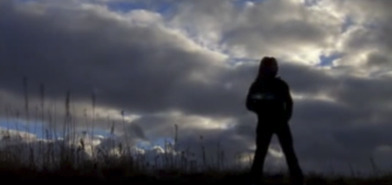
Female voice-over revealing a terrifying truth about motherhood at the end of the film. This film gives a cold dead feeling inside from the casual yet downcast demeanor as the leading character talks about her dysfunctional life and especially the ending, where the girl is revealed to have secretly miscarried a baby and we see her dump it into the canal (“I’ve become good at hiding things”). Both my film and About A Girl attempt to humanise the female main character outside of their tragedies.
2. Tobe Hooper - director of Poltergeist Paranormal activity centred around past events and the presence of aggrieved spirits. This was a film that made an impact on me from its non-stop tension, even before the presence of the supernatural becomes apparent. Tobe Hooper, ever since creating The Texas Chainsaw Massacre (1974) has achieved many awards, and after this film, it is easy to see why. It also has a similar plot to my initial idea for my film - where a great wrong done in the past creates a ‘haunting’ by aggrieved spirit(s)..
3. Peter Sasdy – Director of The Stone Tape (1972)

The original idea from the film was stones “recording” traumatic events from the past. While the current draft has drifted away from this concept, it still lives on with how Agatha remembers everything about the past as if she died yesterday, despite the superficial veneer of the current day hospital. However, Agatha is a real soul though in my film.
4. David Lynch - Eraserhead, The Elephant Man His black and white films – particularly The Elephant Man In the latter, view of Victorian England shot in black and white featuring cruelty and time-specific sounds, sights and atmospheres. The film always seems to have a sense of foreboding, even when the scene is uneventful, and with a deeply engaging soundtrack. Eraserhead will always always be an influence due to its deliberate disturbing monochrome style, investigation of altered perception and the anxieties of parenthood.
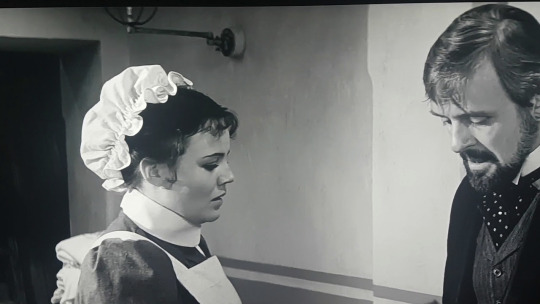

5. James Gardener- Author of: A Complete History Of Brighton Workhouses A detailed and easy-to-understand book centred around the original workhouse in my area. It includes the Brighton General Hospital Site. It helped give a real-life grounding to my supernatural tale.
6. Richard Boden - director of the Blackadder series 4 finale, Goodbyeee The series as a whole has very little to do with my film, but this is a powerful episode whose fade-out ending and closing-sound inspired the cross-dissolve effects and soundscape in my film - coincidentally both are centered with the cruelty of the past and atmospheric sound. Present and past merge at this point. One of the most popular scenes in TV drama/comedy and understandably so too.
7. Piotr Obal – various films and still images Obal is an independent artist who works with art, music and still photography. Occasionally, he teaches youths how to work at the computer like me (!) when he was helping out with an arts award I was studying for. Below is one of his images that has been an influence on me and the film. I love his Photoshop collages and the wonderful images he posts from his native Poland.

Work by Piotr Obal
8. Nalini Malani- for her immersive installations, ‘disgraced’ women under partiarchy, history and mythology, miscarriages of justice. I found out about Malini when I was writing my essay on her work in the Diversity module: what started off as just finding out about an artist for the sake of my writing became a long-lasting admiration and inspiration from an artist who not only knows where she is coming from (from her upbringing hugely affected by India and Pakistan’s partition) but willingly sticks her neck out for those oppressed by society and history, and confidently shows her creations to the world. A particularly relevant aspect of her work is her use of the supernatural and mythology stories and myths to highlight aspects of women’s oppression throughout history.
9. Chris Butler- director of ParaNorman A key influence, supposedly aimed at children, I used the same of the spectre in this moving animation, and I was influenced by its themes about the cruelties of humanity and how we “moved on”. The spectre is a ghost of a falsely accused of being a ‘witch’ who wreaks her revenge on those who persecuted her.
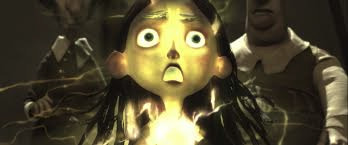
It was also a strong influence that is more powerful at its climax and twist. In-depth look at how prejudice destroys lives that are never regained - even death provides no relief. Butler is a part of Studio Laika, creating animated films that go beyond the norm.
10. Jacqueline Wilson - the writer of the Hetty Feather trilogy and other such Victorian novels such as Clover Moon.

A part of Jacqueline’s writings is her commentary about how unjust the past could be compared to today: even though her protagonists speak in ways that were customary to Victorians, she keeps them relatable the same way she keeps her modern-day protagonists relatable. The writing style of her books inspired certain characteristics of Agatha’s narration, because it was easy to understand yet engaging.
11. David Lean - Director of Great Expectations (1946) This film, based on the Dickens book, also brought to mind the cruel period of the Victorian era, and the acting and emotions continued that spirit and my inspiration around my project. I love that it is black and white as well as dialog-centred - I particularly like the formal style of speech - even to express negative emotions- for example:
“Let me point out the topic that in London it is not the custom to put the knife in the mouth for fear of accidents. It's scarcely worth mentioning, Only it's as well to do as others do”.
Miss Havisham, an almost ghostly older woman, in a similar way to Agatha cannot move beyond the terrible wrong done to her - she was left at the alter and devoted her life to training her adopted daughter, Estella, to get revenge on men.I use s similar obsessive, sing-minded hatred to motivate Agatha.

12. Sunset Boulevard (1950)
This film involve a man becoming the object of affection of a former silent movie star, Norma Desmond who overtake his life little by little until she kills him. Norma suffered with the times when silent movies went out of fashion and she is unable to move on, alone in her great house: people told Norma that she had no value and it had an impact on her psyche. She loses all sanity when arrested for killing Joe Gillis as she believes she is back in show business. The film also explores facades; Norma may live a glamorous if not lonely life, but her mental state torments her, like Aggie has with hers as she wanders around the hospital site driven ‘mad’ with grief and anger.
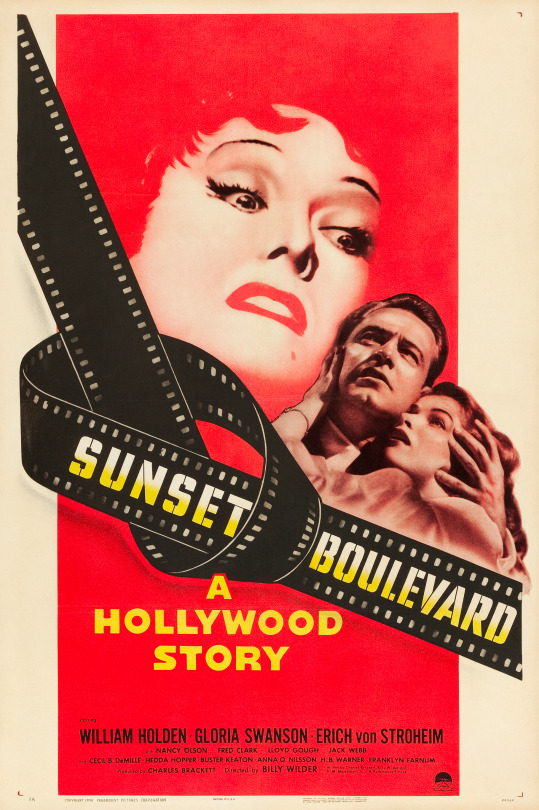
13. R D Laing: ‘anti-psychiatrist’
'Here was someone explaining madness, showing how the fragmentation of the person was an intelligible response to an intolerable pressure”
Quote from: https://www.theguardian.com/commentisfree/2013/aug/25/rd-laing-aaron-esterson-mental-illness
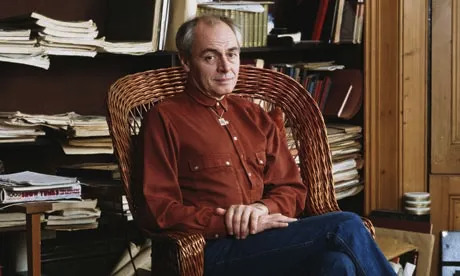
In discussing the concept of my film with a member of my family, I was directed to the psychiatrist/anti-psychiatrist, RD Laing. In the 1960’s and early 1970’s Laing wrote about how a person’s so-called ‘mad’ behaviour was in fact intelligible when their entire situation and experience was taken into account. He and other writers (like David Cooper) talked about the concept of the ‘double-bind’ where a person’s opportunity to make a decision to resolve the way they were being treated was blocked – perhaps by a member of their family saying that it was not in their personality to be assertive or angry.
This reminded me very much of Agatha; she tries to express her outrage at the great wrong done to her, but she is judged as unworthy and undeserving, so the wrong is seen as justified and her punishment for being the ‘low-life’ who would have a child and have to live in a workhouse. It is circular – she is treated badly because she deserves to be treated badly and so this means that her hatred and insanity brings the great wrong up herself.
Laing is largely forgotten today, but his ideas resonate with certain ideas in feminism and anti-racism. ‘Gaslighting’ is everywhere, both back then and now.
https://www.youtube.com/watch?v=9NnBonXPLJM
3 notes
·
View notes
Text
The Return Of Doctor Mysterio - Doctor Who blog
(SPOILER WARNING: The following is an in-depth critical analysis. If you haven’t seen this episode yet, you may want to before reading this review)

There was no new series of Doctor Who in 2016. Instead we were handed a god awful spinoff series called Class. A show presumably written by a mad scientist who wanted to create an unholy abomination of terror by combining the worst elements of Skins and Torchwood (which is to say all of them) for the purposes of global conquest. Thankfully the BBC pulled the plug after one lousy series and the Great British public collectively breathed a sigh of relief.
But not to worry! We still got a Doctor Who Christmas special! Because... they’re always good, right?
Well I suppose I should count my blessings. Yes this is a Christmas special, which means we get the usual slush-fest and wafer-thin plots, but on the other hand, at least The Return Of Doctor Mysterio isn’t as bad as The Husbands Of River Song. That one was just a diabolical exhibition of self indulgence and general incompetence. Doctor Mysterio thankfully never gets quite as bad as that, but there’s still not a lot to really praise regardless.
First off, the plot is really weak. Evil brains in jars want to stage an alien invasion and trick the world leaders so they can take over their bodies and blah, blah, blah. I swear Moffat isn’t even trying anymore. Say what you like about Moffat’s previous story arcs (God knows I have), but at least they were imaginative. They were stupid and convoluted as fuck, but they were still imaginative. This is just sad. It’s so lacking in substance, you could have written the script on the inside of a chocolate wrapper. The brains in jars are a massive cliche in and of themselves and the eyes just made me giggle inappropriately. And the plan itself is just silly. Is nobody going to be just a tiny bit suspicious that the world leaders all have diagonal scars across their faces? And why go to all the trouble of hiding a gun inside your head when you can just use a holster like a normal person? Yes it’s a cool visual, but it must be an unnecessary hassle for the poor bastards.
Then there’s all the superhero stuff. This comes down to personal taste I suppose, but honestly, I wasn’t impressed. This might partially be down to the fact that I’m not really a Superman fan. I’ve often found the character to be dull and overpowered. But it’s not just that. Grant, aka the Ghost, exists solely to parody Superman. Outside of that, he has no real character. Justin Chatwin tries his best, but he just doesn’t have the presence or the charisma to pull off a cheap Superman knock-off, and he has absolutely nothing to work with.
The comedy as well is a bit of a dud, though that’s nothing new. For a Moffat story, shit comedy has become par for the course (what was the deal with Lucy squeezing that squeaky toy while she was interrogating the Doctor? Was that supposed to be funny? It’s just so random and stupid). Obviously there’s the Superman parody, which brings absolutely nothing new to the table. Peter Capaldi is being forced to do whimsy, goofy again and once again it just comes off as really awkward. I just feel sorry for Capaldi at this point. It’s becoming abundantly clear that Moffat hasn’t the faintest idea what he’s doing with this Doctor. And Nardole is back. God knows why. I’m assuming Matt Lucas stumbled onto the set by mistake. He certainly can’t have been invited back to reprise the role because he was popular or anything. Nardole had no character in Husbands Of River Song and he somehow has even less character here. He’s basically here to comfort the Doctor, who’s still upset about River Song for some reason (can we move on?), and provide comic relief. Well, I say ‘comic’ relief. This is Matt Lucas we’re talking about here. The man is about as funny as a clown at a funeral.
And then we get the usual Moffat bullshit. Lucy, played by Charity Wakefield using an American accent that sounds more like an Australian accent after it got caught in a spin dryer, is yet another trademark Moffat woman who bosses men around as a token gesture of ‘female empowerment’ (there’s even a moment where Grant begs her not to slap him while he’s holding a spaceship), but has absolutely no character outside of the man in her life. She and Chatwin have absolutely no chemistry together and the romance itself is both bland and disturbing. If Grant and Lucy have known each other since they were kids, why does he refer to her as Miss Fletcher? Also would Lucy really be so willing to snog Grant’s face off when she realises that he’s been abandoning her baby regularly to fight crime? Yes he takes the baby monitor with him, but that’s not going to do much good if the apartment were to catch fire or something. And what about the fact that he’s been stalking her for years? Moffat has done this a few times now, presenting men stalking women as romantic, and it’s creepy as fuck.
Once upon a time I would have torn Moffat to shreds over an episode like this, but now I’ve just become bored and fed up. It’s always the same problems over and over again, and I’m getting pretty bloody sick of it. Oh well. One more series to go and then I’ll never have to watch these episodes ever again.
Final verdict on The Return Of Doctor Mysterio? Pfft... forgotten it already.
#the return of doctor mysterio#steven moffat#doctor who#twelfth doctor#peter capaldi#nardole#matt lucas#bbc#review#spoilers
15 notes
·
View notes
Text
Best TV of 2019 so far
Back to Life
Daisy Haggard’s downbeat gem took on a tough topic – a woman’s return to her home town after a stretch behind bars – and turned it into a meditation on grief, regret and the passing of time, though with enough gags to keep things zipping along.
What we said: A few episodes into Back to Life, I felt like pushing it away in protest. “No, no!” I cried inwardly. “It’s too much! It’s too good!” Read the full review
Barry
In its second season, this black comedy about a hitman who catches the acting bug took its story into darker territory, with Barry’s attempts to extricate himself from his past life only dragging him further into oblivion. Things aren’t going to end well.
What we said: Though it’s a comedy rather than a thriller, Barry replicates much of what made Breaking Bad irresistible. Read more
Broad City
After five virtually flawless sitcom seasons, Ilana Glazer and Abbi Jacobson’s millennial kweens went out in the same way they came in: with gross-out gags, madcap surrealism and one of the greatest on-screen friendships in TV history.
What we said: This season has given Abbi and Ilana the best possible send-off. It has been joyful, silly and wild, and while it feels like the perfect and necessary time to wrap up their adventures, it is poignant that they’ve done so by reminding you just how good those can be. Read more
A fitting, shocking end ... Catastrophe. Photograph: Channel 4
Catastrophe
Another comedy that went out on a high, Sharon Horgan and Rob Delaney’s tale of floundering parents managed to deliver more home truths about the family unit, pay fond tribute to late guest star Carrie Fisher – and offer up one of the most shocking endings in recent TV history.
What we said: From first to last, Catastrophe has been an unremitting triumph. Read the full review
Chernobyl
Already sitting atop IMDb’s top 250 TV shows list before the final episode has even aired, Sky and HBO’s restaging of the Soviet nuclear disaster captures the ineptitude, corruption and horror at its core.
What we said: Chernobyl is a disaster movie, a spy movie, a horror movie, a political thriller, and a human drama, and it spins each plate expertly. The terror is unflinching and explicit, and its images of burned bodies collapsing into putrid decay are impossible to forget. Yet it never feels shocking for the sake of it, only as haunting and horrible as its subject matter demands. Read more
Finally ... David Attenborough lays bare our greatest threat in Climate Change: The Facts. Photograph: BBC/Polly Alderton
Climate Change: The Facts
After years spent hinting at the damage done to our planet by the climate crisis , David Attenborough finally laid out the threat in all its magnitude, in a documentary that may just have turned sceptics into believers.
What we said: This is a rousing call to arms. It is an alarm clock set at a horrifying volume. Read the full review
Dead Pixels
E4’s comedy accurately captured the loneliness and mundanity, but also the sense of community, that comes with picking up a controller. All that, and it was as addictive as an all-night Fifa session to boot.
What we said: This wickedly entertaining new sitcom may have been inspired by the massive success of online games like World of Warcraft but, thankfully, you are not required to know your Azeroth from your elbow to enjoy it. Read more
Derry Girls
One of last year’s surprise hits, Lisa McGee’s Northern Irish comedy didn’t let things slip in its second season, with its quartet still finding teenage kicks in the midst of the Troubles. The scene in which teens from both sides of the sectarian divide unleashed a barrage of stereotypes about each other (“Protestants hate ABBA!”) is among the year’s funniest.
What we said: Derry Girls’ magic remains intact. The evocation of the 90s is as lightly done as ever (Elizabeth Hurley is fleetingly referenced – “She’s a total ride, but she paperclips her frocks together”) and the Troubled setting never overwhelms but simply throws into relief the ordinariness of the girls’ lives in the middle of extraordinary depths of conflict. Read the full review
Don’t Forget the Driver
Bleak comedy … Toby Jones in Don’t Forget the Driver Photograph: BBC/Sister Pictures
Pulling off a state-of-the-Brexit-nation series looked a tall order, but Toby Jones’s understated comedy-drama was taller, finding humour and pathos in its tale of a coach driver who discovers a refugee hiding in his wheel arch and a body washed up on the beach.
What we said: If it is a comedy, it is one with the bleakest tragedy at its heart. But whatever label you put on it, it is a fine, fine piece of work. Read the full review
Fleabag
Back for its second (and, as it turned out, final) outing, Fleabag added a hot priest into the already heady mix of biting wit and family dysfunction – and it built to a heart-rending ending with a wedding, a mad dash to the airport … and a fox. Unforgettable.
What we said: Series two raised the bar. Phoebe Waller-Bridge’s risks were so impressive all one could do was shake one’s head in appreciation. Read the full review
Game of Thrones
Unquestionably the TV event of the year ... Game of Thrones. Photograph: HBO
Did the gargantuan fantasy drama stick the landing in its final season? That’s an argument for the comments section, but both in the scale of its six episodes, and the fevered discussion they prompted, it was unquestionably the TV event of the year.
What we said: The ending was true to the series’ overall subject – war, and the pity of war – and, after doing a lot of wrong to several protagonists, it did right by those left standing. When you play the Game of Thrones, you win or you die. Overall, I think, it won. Read the full review
Gentleman Jack
Sally Wainwright travelled back in time for her latest piece of thrillingly human Yorkshire drama, with this real life tale of Anne Lister. Suranne Jones has received rave reviews for her portrayal of the 19th-century industrialist and diarist, who developed a code to hide her lesbianism.
What we said: It’s Regency Fleabag! Because the heroine occasionally breaks the fourth wall and exteriorises her inner monologue. But it’s set in Halifax in 1832, so it could be Northern Jane Austen. Then again, it’s about Anne Lister, who has been dubbed the first modern lesbian, so maybe it’s Queer Brontë ... You can afford to have a little fun with Gentleman Jack; Sally Wainwright clearly has. Read the full review
Ghosts
The Horrible Histories team offered up more unashamedly silly comedy with this spirited sitcom about a group of ghouls going to war with the new owners of a crumbling mansion.
What we said: In making us giggle at the supernatural, Ghosts is very British. But it is American in the sense of having a gag-to-airtime ratio much higher than British sitcoms normally manage these days. Read the full review
I Think You Should Leave With Tim Robinson
This deliriously absurd sketch show from a former Saturday Night Live player was hailed immediately as one of the greatest Netflix shows to date.
What we said: I wolfed down the entire series in one sitting, genuinely incapacitated with laughter. And then I watched it all again. I’m at the stage where I’m cherrypicking sketches now, but I’ve seen my favourites six or seven times. I’m fully obsessed at this point. At its peak, I think I Think You Should Leave might be one of the funniest things I have ever seen. Read more
Leaving Neverland
A devastating four-hour exposé of alleged child sexual abuse by Michael Jackson. Wade Robson and James Safechuck chillingly and plausibly outlined their accounts of childhood grooming by the man that they, and the whole world, worshipped.
What we said: An astonishing piece of work. Relentlessly spare and unsensationalist, it manages better than any other in its genre not to let its attention wander from the survivors’ testimony. Footage of Jackson is confined almost wholly to that of him with the boys themselves on stage, private calls between them and family snaps. He is never allowed to overwhelm the story. Read the full review
Line of Duty
Complex … Martin Compston and Stephen Graham in Line of Duty. Photograph: BBC/World Productions
Jed Mercurio’s police corruption masterpiece returned for a fifth outing after a two-year wait, bringing with it a stunningly complex performance from Stephen Graham, more urgent exits required … and heartstopping, jaw-dropping action to the last.
What we said: As ever, nothing is wasted; not a scene, not a line, not a beat. It fits together flawlessly – you can imagine Mercurio sitting like a watchmaker at his table with the parts spread before him and fitting the loupe to his eye before assembling the whole thing and listening for its perfectly regulated tick. Read the full review
Mum
Stefan Golaszewski’s sitcom tour de force ended on a heartwarming high. Over three lovely series, Lesley Manville and Peter Mullan as Cathy and Michael gave us the gift of a quietly epic romance that will echo down the ages – and kept the tears in our eyes.
What we said: Mum might have looked like it was just a sitcom, but it had something beautiful to say about love and loss. It’s said it. Read the full review
Pose
Assembling the largest collection of trans actors in televisual history, Ryan Murphy’s big-hearted drama about the voguing scene in 1980s New York had style, grace, swagger and sass for days. What’s not to love?
What we said: Razzle-dazzle showmanship isn’t Pose’s only source of infectious joy. Watching the slow, still-unfolding process of these characters becoming more and more their true selves is as exhilarating as the opening bars of Cheryl Lynn’s Got to be Real. Self-actualisation isn’t easy, but it sure is beautiful. Read the full review
Pure
Frank and fearless ... Pure. Photograph: Sophia Spring/Channel 4
Following a young woman with a form of OCD called Pure O, which manifests as constant invasive thoughts about sex, this comedy-drama was among the year’s frankest and most fearless TV.
What we said: The drama and the gags are never sacrificed to worthy exposition, virtue-signalling or finger-wagging, but, at the same time, the series has so evidently been made in good faith that you can surrender to it entirely, never fearing that it will put a foot wrong. Read the full review
Russian Doll
A hipster Groundhog Day, but also so much more, Natasha Lyonne’s comedy about a thirtysomething trapped in a time loop of death and rebirth proved a truly mind-bending proposition.
What we said: Russian Doll is an acquired taste. But do persist: there is such a fine, idiosyncratic, impressive show nested within. Read the full review
Sex Education
Gillian Anderson starred as Jean, a sex therapist whose son Otis (Asa Butterfield) – though too anxious to masturbate himself – sets up a sex advice service at school. A punchy, horny comedy, with the added bonus of the fantastic Ncuti Gatwa as Otis’s best friend Eric. Worth watching for his heroic prom outfit alone.
What we said: Endlessly and seemingly effortlessly funny, in a naturalistic way that doesn’t have you listening for the hooves of the next gag thundering down a well-worn track but, like Catastrophe, catches you almost unawares and makes you bark with laughter. Read the full review
The Last Survivors
Sam Dresner, Anita Lasker-Wallfisch, Frank Bright and Susan Pollack ... The Last Survivors. Composite: BBC/Minnow Films Ltd
Arthur Cary’s thoughtful, wonderful and always dignified 90-minute documentary heard the stories of some of the last living people who survived concentration camps as children. A very important work indeed.
What we said: For an hour and a half, I was crying, especially when Cary followed three generations of Holocaust survivors to Auschwitz, knowing all the time that tears are not enough. Nor guilt. Read the full review
The Other Two
How would you react if you could barely get cast as Man Who Smells Fart in an advert while your kid brother became a Bieber-esque teen hearthrob overnight? That’s the premise of this brilliant satire, which skewers our pop-culture-obsessed society spectacularly.
What we said: It has heart, charm, steel, belly laughs and a gimlet eye. Get on it. Read the full review
The Victim
John Hannah and Kelly Macdonald starred in an intelligent drama about a vigilante attack on a potential child killer that managed to ask ever more challenging questions as its episodes rolled on.
What we said: It is a drama that resonates with its time by asking what constitutes a victim and how much leeway we allow in bestowing that status. Do they have to be perfect? How sure do we have to be? And what happens when the perpetrator becomes a victim too, of a different kind? Read the full review
The Virtues
Shane Meadows reunited with This is England star Stephen Graham for an unflinching drama about a troubled dad attempting to reunite with his long-lost sister and process childhood sexual abuse.
What we said: Unspoken pain infuses every scene, every gesture and expression from Stephen Graham and in doing so lays the foundations to do justice to the suffering of victims everywhere. Read the full review
The Yorkshire Ripper Files
Liza Williams’s three-part documentary revisited one of the biggest – and longest – murder manhunts in British history, taking us back to a time so different it seemed almost foreign.
What we said: At its best, Williams’ series – with its mixture of archive footage and new interviews – is a social document. The hindsight it offers is not primarily about the mishandling of the investigation, but of the grim tone of the times. Read the full review
This Time With Alan Partridge
Appalling company ... This Time With Alan Partridge. Photograph: Colin Hutton/BBC/Baby Cow
The excruciating monkey tennis-pitcher went back to the BBC for a One Show-style magazine programme. Inevitably – and hilariously for viewers – it wasn’t the smoothest of returns.
What we said: We get the heroes we deserve, and as you finish writhing in agony and lie limp from laughter, hatred, panic, despair or in awe at the end of another half-hour in his appalling company, you can only reflect that if Brexit means Alan then the whole business just got more complicated still. Read the full review
Veep
A last hurrah for Julia Louis-Dreyfus’s mendacious yet incompetent vice-president, in a political satire that was perfectly attuned for these most buffoonish of times.
What we said: Louis-Dreyfus has won a record six Emmy awards for her role as Selina Meyer, and, frankly, it’s no wonder. She is magnificent, brittle and furiously amoral. In this seventh and final season of Veep, it appears to be getting out while it still has a hope in hell of making its fictional world look more comedic than the real one. Read the full review
When They See Us
Almost unbearably harrowing ... When They See Us. Photograph: Atsushi Nishijima/Netflix
Ava DuVernay’s staggering miniseries about the Central Park Five showed how a group of young boys came to be falsely convicted for raping a young white woman in 1989. It is unbearably harrowing to watch the boys, as young as 13, get violently coerced by police into giving confessions.
What we said: The performances are uniformly astonishing – especially from the central five, Asante Blackk, Caleel Harris, Ethan Herisse, Marquis Rodriguez and Jharrel Jerome, most of whom are just a few years older than the teens they are playing. They capture the innocence, in all senses, of children, and the permanence of its loss. It feels like a great privilege to see them. Read the full review
Years and Years
Russell T Davies’s hugely ambitious drama followed a family through the next 15 years of British life, taking in the migrant crisis, terrifying technological innovations and Trump’s increasingly fraught face-off with China.
What we said: For a series that compresses 15 years into six hours, it seems to pass in the blink of an eye thanks to Russell T Davies’s trademark humour, compassion and the kinetic energy with which he infuses every project. We do not deserve Davies, but thank God he’s here. Read the full review
100 Vaginas
Following her projects about breasts and penises, artist Laura Dodsworth photographed a range of women’s vulvas, then showed the sitters their vaginal portraits and interviewed them for their responses. The result? Intimate, empowering television, unlike anything that has ever aired before.
What we said: A gently but relentlessly radical documentary. It’s not until you see a full set of female genitals filling your screen that you realise how little you see anything of or about them in wider culture. Read the full review
Source: https://www.theguardian.com/tv-and-radio/2019/jun/03/best-tv-of-2019-so-far
0 notes
Text
I assume Humphrey wasn't there because they didn't want to do the effects for an eight minutes sketch. Same reason none of the ghosts walked through anything. I still missed him :(
10 notes
·
View notes
